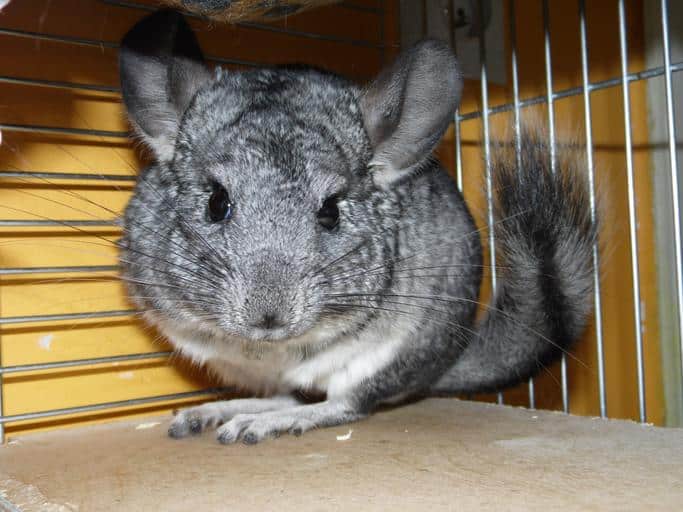
Chinchillas are gaining in popularity as pets across the globe, and while most
Description
: Chinchillas are some of the cutest little animals to be found. They are most commonly gray, with more and more color mutations becoming available, such as violet, ebony, sapphire, mosaic, and so many more. At first, they are odd to look at, as they do not really “fit” into any category of animal, but their little faces and big ears are quite pleasing, and their size is easy to manage. They look a bit like a rabbit/squirrel cross, and they are usually roundish and plump, with thick, smooth fur. They are long-lived, as long as twenty years or more.
Temperament:
A
Selection:
I would recommend locating a reputable breeder to buy a
Housing
: Chinchillas should not be kept in 99 percent of the commercially available cages marketed as “chinchilla cages.” They are unsafe and far too small for an active
Your cage should include shelves at several levels for the chins to jump onto, but no ladders are needed, and can cause injury. A chin should have at least one house in his cage to sleep and hide in. If it is made of wood, he will chew it, so it will need to be replaced from time to time.
No part of your cage that can be reached by curious chinnie teeth should be made of plastic. Plastic will be chewed, and if ingested, can cause injury or death.
Provide a soft hammock for your chin to cuddle in, and plenty of applewood sticks, cholla wood blocks, and other inexpensive chew toys. As with all rodents,
Also provide your chin with a large running wheel. Chins love to run, and it helps to keep them fit and prevent boredom.
There are many ways to customize your pet’s habitat with toys, wheels, places to hide, etc. Use your imagination, but make sure everything you give your pet is safe for him.
Bedding:
Chinchilla cages should be bedded with pine or aspen shavings. Cedar contains oils and chemicals which can kill a
Bedding must be kept clean and fresh. Chinchillas produce a large quantity of tiny feces, which accumulate quickly. Their bedding should be changed every couple of days, and their cage and toys sanitized regularly, and replaced as needed.
Look for Part Two of this article, where you will learn how best to care for your new pet once you get him home.




